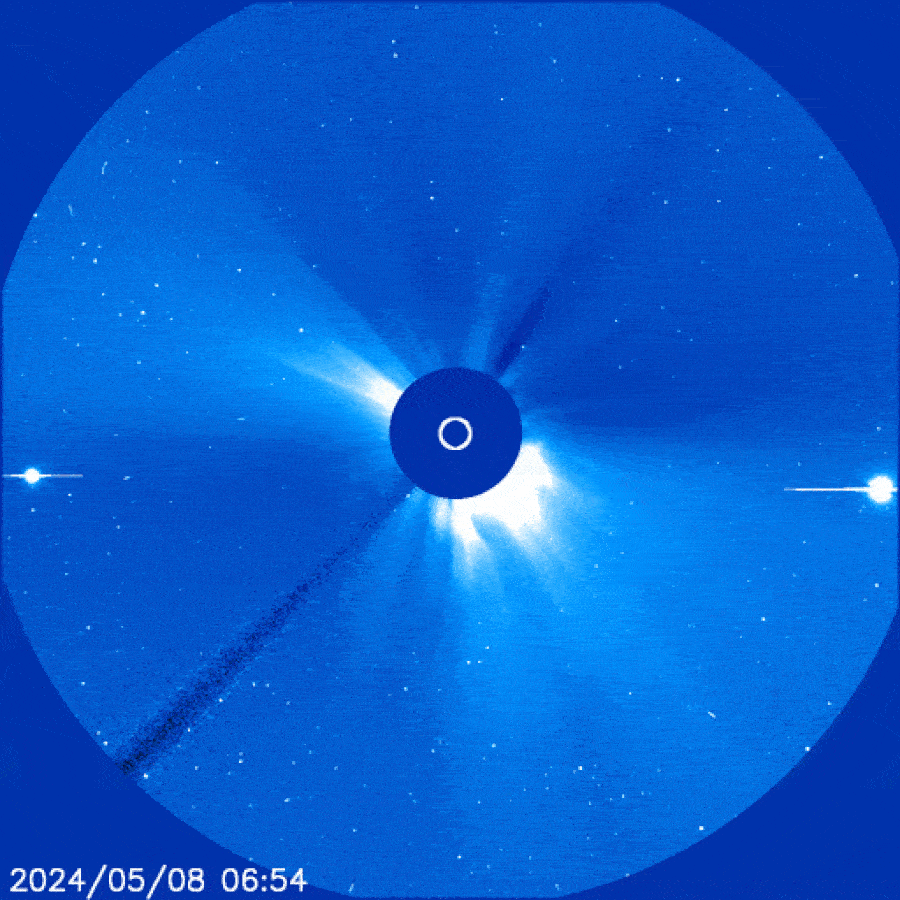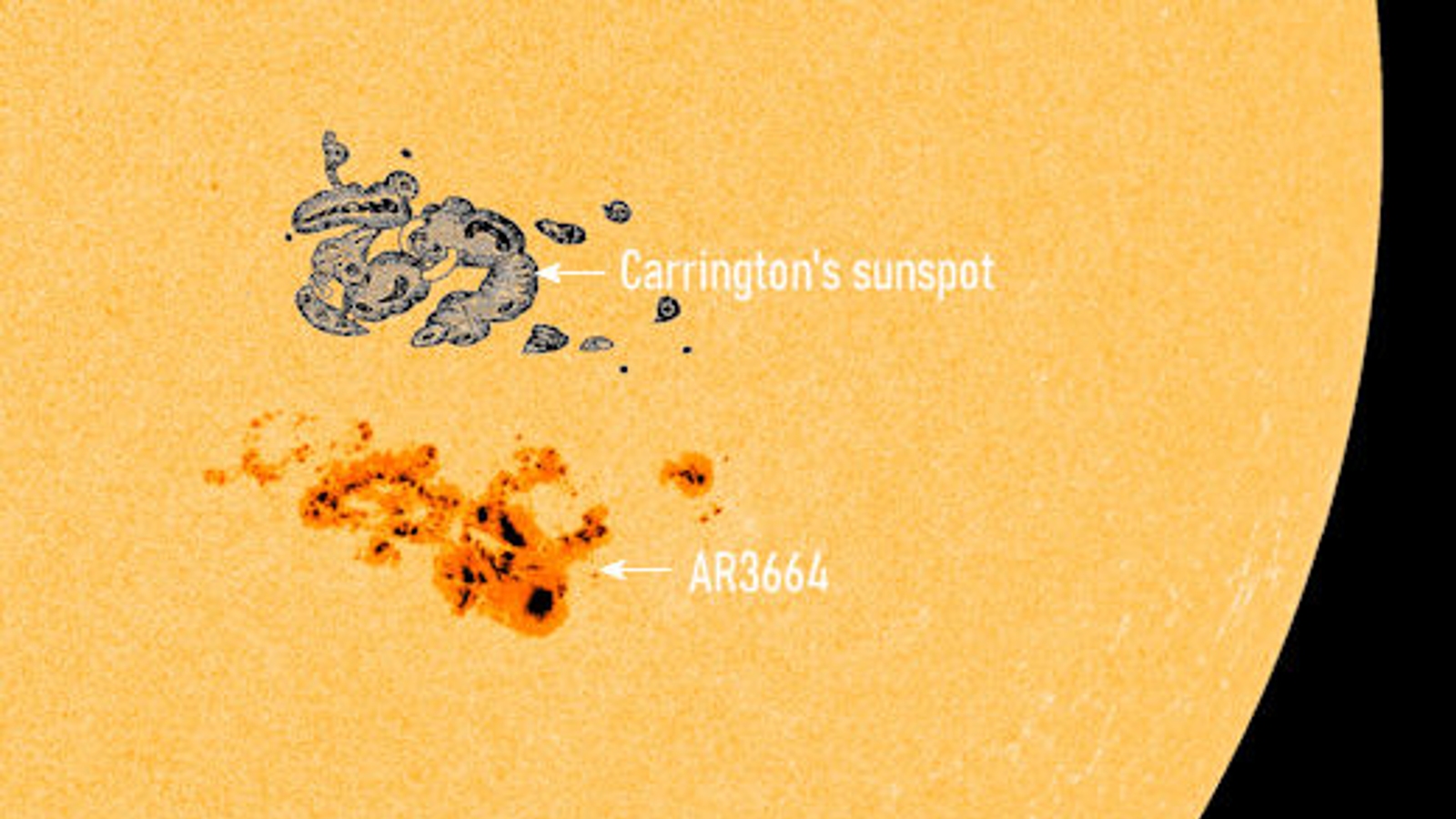'Extreme' geomagnetic storm that painted Earth with auroras this weekend was the most powerful in 21 years
Between Friday (May 10) and Sunday (May 12), people across the world were treated to stunning aurora displays as Earth's magnetic field experienced its biggest disturbance since October 2003. The supercharged storm also messed with satellites and caused power grid irregularities.

Earth has just experienced its most powerful geomagnetic storm in more than 20 years after a series of solar storms smashed into our planet. The extraordinary event triggered vibrant aurora displays as far south as Florida and caused power grid irregularities as well as temporary satellite issues.
The prolonged disturbance to Earth's magnetic field, which lasted from Friday (May 10) to the early hours of Monday (May 13), started when at least five solar storms, known as coronal mass ejections (CMEs), slammed into our planet's protective field one after the other. These CMEs were launched into space last week by solar flares from a single, massive sunspot, named AR3664, which is more than 15 times wider than Earth. A majority of these flares were X-class — the most powerful type of surface explosions the sun is capable of producing.
The CME bombardment temporarily weakened Earth's protective field, which enabled charged particles from the sun to penetrate deep into the atmosphere and excite molecules of gas. These in turn triggered vibrant, multicolored auroras at latitudes much farther from Earth's polar regions than normal. In the Northern Hemisphere, auroras lit up the skies as far south as Florida, Mexico and Puerto Rico, as well as across parts of Europe, according to Spaceweather.com. Similar light shows were also spotted at equally unusual latitudes in the Southern Hemisphere.
Scientists at the National Oceanic and Atmospheric Administration's Space Weather Prediction Center (SWPC) had forecast that the storm would be a "severe" G4 disturbance — the second-highest class of geomagnetic storms. However, the disturbance exceeded initial expectations and briefly reached "extreme" G5 status at least twice over the weekend, firstly on May 10 and again on May 11, according to SWPC statements. This is the same category as the infamous Carrington Event of 1859 and is the first time Earth has experienced G5 conditions since the Great Halloween storms of 2003.
In theory, G5 storms can send satellites tumbling to Earth, damage ground-based infrastructure and knock out power grids. However, in this case, the worst effects seem to have been some minor "power grid irregularities" and temporary disruptions to GPS and other satellite services, according to the SWPC.
Related: Aurora photos: Stunning northern lights glisten after biggest geomagnetic storm in 21 years

G5-class storms are rare but are more likely to occur during solar maximum — the most active phase of the sun's roughly 11-year solar cycle. Scientists can't pinpoint exactly when this period begins in real time, but several experts believe we have already entered solar maximum.
Sign up for the Live Science daily newsletter now
Get the world’s most fascinating discoveries delivered straight to your inbox.
Previously, the solar maximum was forecast to arrive at some point next year and be weak compared with previous solar cycles. However, as the solar cycle progressed it became clear that the maximum would arrive sooner — and be more powerful — than initially expected.
Over the weekend, AR3664, which is around the same size as the Carrington sunspot, spat out another two X-class solar flares, including an X5.89-magnitude blast on May 11 — the second-most powerful blast of the current solar cycle. This brings the sunspot's X-class flare count to seven, making it by far the most active sunspot of the current cycle so far, according to SpaceWeatherLive.com.

At least one of these additional X-class flares launched a CME, which was initially predicted to hit Earth and possibly extend the weekend's geomagnetic storm deep into Monday (May 13). But further observations showed that this CME is not directed at Earth, Spaceweather.com reported. AR3664 is now turning further away from our planet and is unlikely to bombard us with solar storms again.
However, given the rate at which the current solar cycle is progressing, there is a decent chance that we will experience more G4 or G5 disturbances over the next few years.
Editor's note: This story's headline was updated to indicate the storm was the most powerful in 21 years, after a prior verison said 20 years.

Harry is a U.K.-based senior staff writer at Live Science. He studied marine biology at the University of Exeter before training to become a journalist. He covers a wide range of topics including space exploration, planetary science, space weather, climate change, animal behavior and paleontology. His recent work on the solar maximum won "best space submission" at the 2024 Aerospace Media Awards and was shortlisted in the "top scoop" category at the NCTJ Awards for Excellence in 2023. He also writes Live Science's weekly Earth from space series.









